
Maruti Suzuki Baleno DualJet Vs Rivals: Spec Comparo
- Apr 30, 2019
- Views : 4857

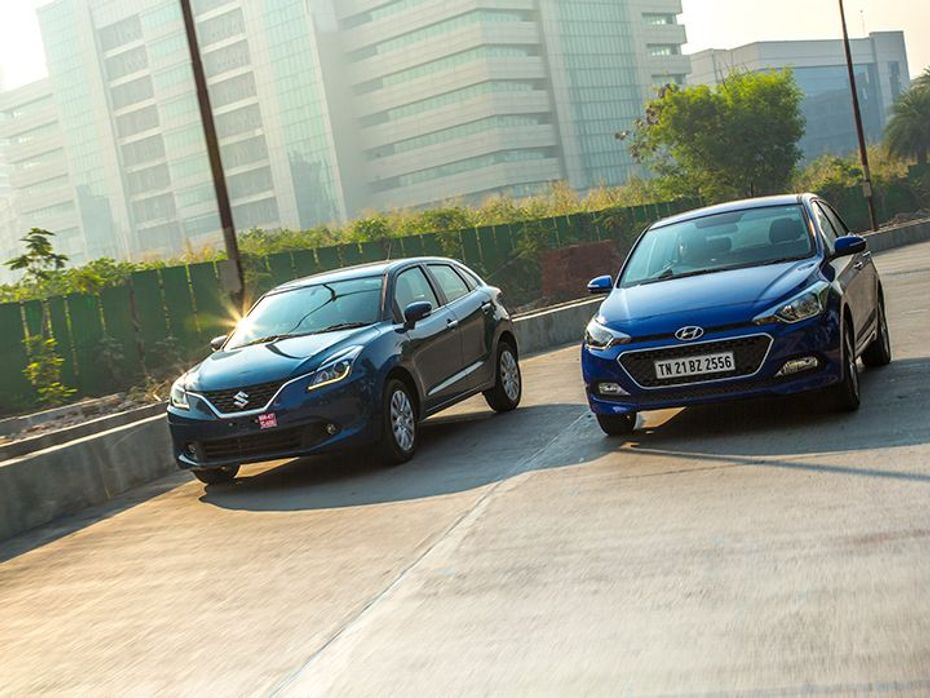
Back in the day when I was a teenager I remember how clearly defined car segments were – hatchbacks cost no more than 5-6 lakh rupees, sedans cost about 8 lakhs, and premium sedans cost 12-14 lakh rupees. Today these lines have been blurred, with manufacturers creating sub-segments within segments. So you have no less than three sub-segments for hatchbacks alone, stretching from a humble 3 lakh rupees to above 10 lakh rupees. The sub-segment that’s currently in vogue though is the top rung of this pyramid. And when I think of this ‘premium’ hatchback segment, what comes to mind is a popular marketing tagline that goes “Make it large”.
The newest entrant in the premium hatchback space is Maruti Suzuki’s Baleno, a car that is the country’s largest car maker’s attempt at making it large in the said space. When we drove the Baleno at the press drives, all us journos came back impressed with its performance, handling and equipment levels. But unless you’ve been living under a rock you would know the premium hatchback arena is dominated by Hyundai’s Elite i20. The Elite i20 has in fact taken the game a notch higher with its design and feature list. A comparison test of the new Baleno with the highest seller in the segment was obvious then, no? To settle matters, we decided to go in for the petrol versions of each car though – admit it, diesels are sure easy on the pocket but they still don’t quite excite us as much as the petrols, do they?
For more details on the Maruti Suzuki Baleno log on to www.shivamautozone.com
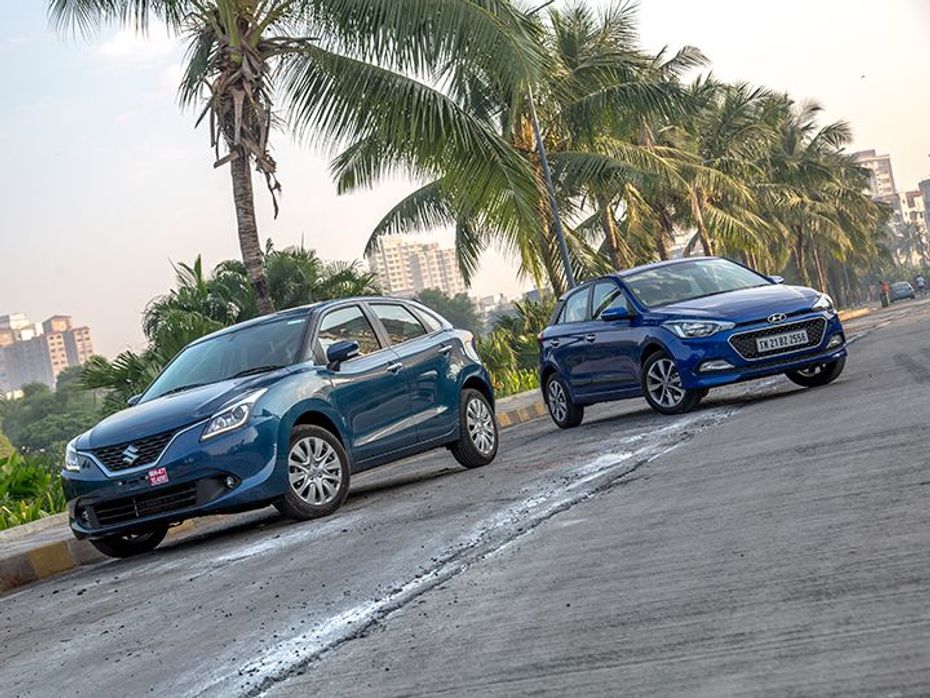
Design:
Maruti Suzuki Baleno: rating_4.0_rating
Hyundai Elite i20: rating_4.5_rating
The Elite i20 received has been praised all round for its chic styling. Rakishly designed headlamps, a sleek hood, low stance and sharp rear make it appealing. In fact the current i20’s design is hard to fault with – it sits low, giving it a sporty appearance, especially with those nice looking alloys. The design of the front grille, ORVMs, broad shoulder line and blacked-out C-pillar add to the car’s appeal and the i20 now looks more European than it ever did, with a distinct upmarket feel. The Baleno on the other hand is all-new, carrying forward just the name of the erstwhile Honda City rivalling sedan. Of course, styling depends one’s personal taste, but admittedly I do not find its design too attractive.

Its rounded lines are contemporary yes, but neither does the car look pretty not sporty. The appearance also changes across variants, and what you see here is the fully-loaded Alpha variant. There’s unique design elements like the chrome lining for the front grille that merges into a chrome element inside the headlight, LED DRLs with projector beams and 16-inch wheels (lower variants get 15-inch wheels). The overall shape is aesthetically pleasing though, and in fact the wide shoulder even reminds of the Porsche Cayenne from the back. The tail lights look nice with LED elements, while the chrome strip tries to give it a more upmarket look.
Design wise the two cars are poles apart, the Baleno looking curvier and more rounded based on Suzuki’s ‘Liquid Flow design technology’ as compared to the i20’s sharp and edgy lines and personally I found the i20 to be better looking.
For more details on the Maruti Suzuki Baleno log on to www.shivamautozone.com
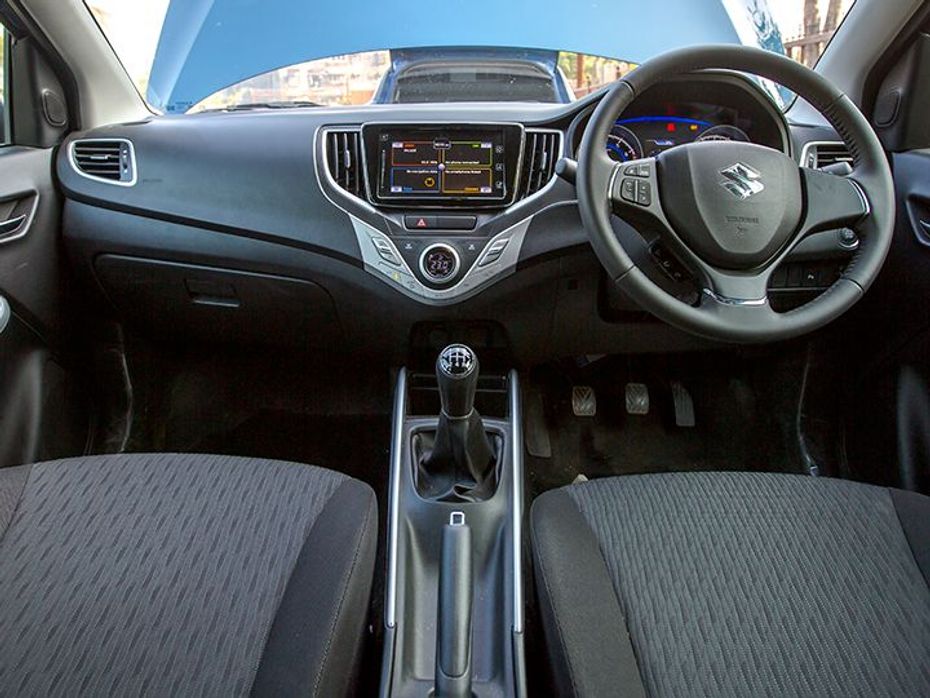
Interior and space :
Hyundai Elite i20: rating_4.5_rating
Maruti Baleno: rating_4.5_rating
These two are perhaps the most important parameters in this segment. Cut-throat competition has of course seen manufacturers stretch interior space to the maximum on existing platforms, while build quality and fit-finish levels have improved significantly. The Baleno holds a slight edge over the i20 in terms of space, offering a roomier feel with slightly better legroom and over 40 litres of additional boot volume. Front seats on the Baleno are more supportive and sportier, but the i20 scores better in terms of rear seat comfort with its softer cushioning and better lumbar support.
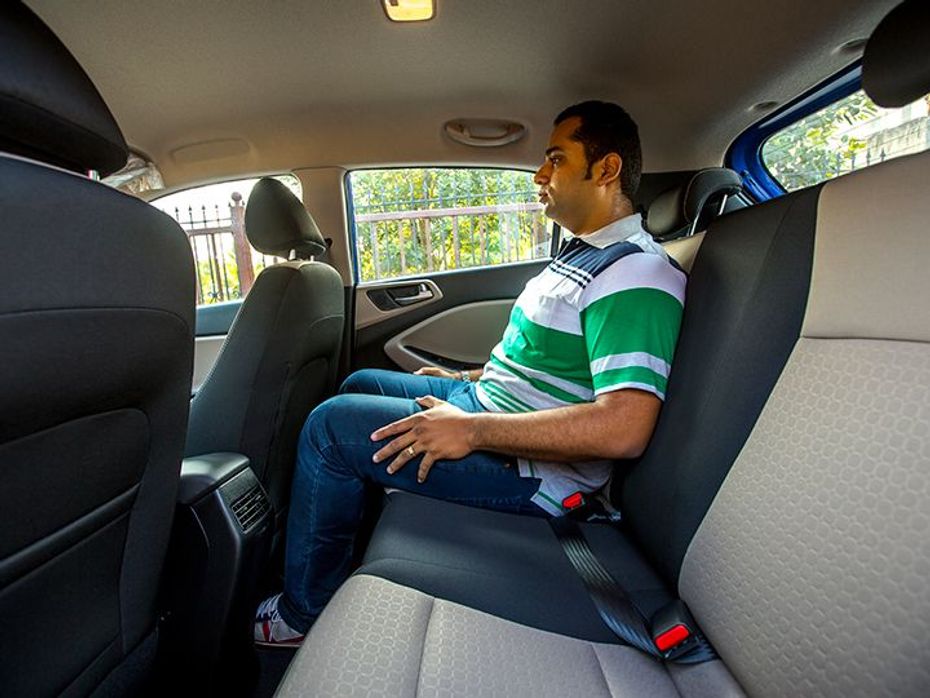
Maruti has always offered good spaces to hold knick-knacks, and the Baleno’s cubbyholes deserve a mention. However, when it comes to quality of plastics and other materials the Baleno loses out to its Korean competitor, the i20’s plastics offering a richer, more premium feel. There’s not much to differentiate though, since the Baleno makes up well in terms of space.
For more details on the Maruti Suzuki Baleno log on to www.shivamautozone.com

Features and equipment:
Hyundai Elite i20: rating_4.0_rating
Maruti Baleno: rating_4.5_rating
Perhaps the next most important aspect on the minds of buyers. Like I mentioned, stiff competition has forced manufacturers to offer more features today, and both cars boast elaborate feature lists and impressive equipment levels. Being the newest kid on the block the Baleno has a long list of likeable features. The Alpha variant gets the touchscreen equipped SmartPlay infotainment system from the Ciaz, a navigation system and voice command, though its trump card is Apple’s CarPlay, a segment first. If you are an iPhone user CarPlay is a definite boon, allowing easy access to your phone’s contacts, messages and of course music on the in-dash display with the same interface as your phone.
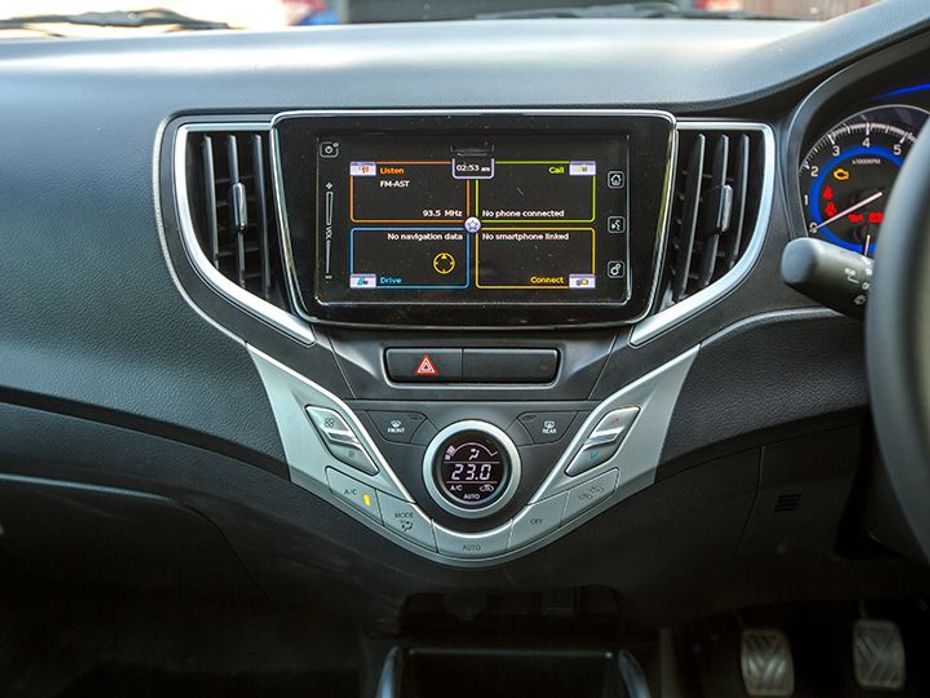
The top variant of the Elite i20 recently received an updated infotainment system that Hyundai is calling the AVN (audio, video and navigation) package, which has brought its offerings in line with the latest in the segment with a 7-inch touchscreen. Both cars get parking sensors and a reverse camera, apart from the usual keyless entry, start button and USB and AUX connectivity. On the whole there’s not much to differentiate between the two, but the Baleno does feel slightly more upmarket, especially with the addition of CarPlay, which enhances your driving experience if you use an iPhone.
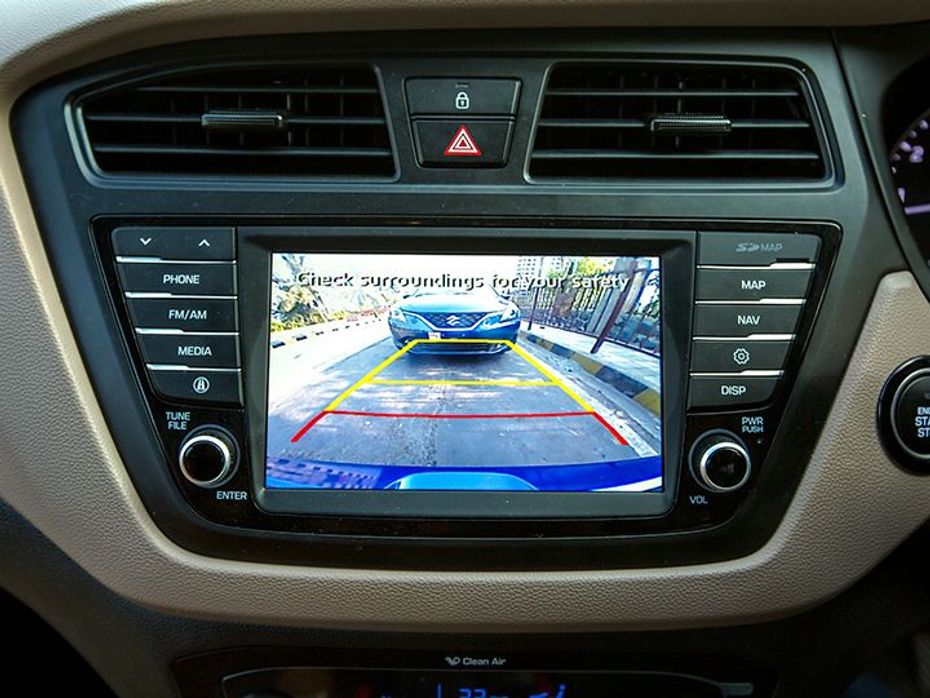
Steering mounted controls on both are user friendly, but the Baleno’s controls offer better ease of using. The Baleno also claws back some advantage in terms of equipment levels, as it gets ABS with EBD as standard across variants, adding to its safety quotient, which is yet another segment first. Instrument clusters on both cars look good – I didn’t quite like the Baleno’s white faced dials though that is a well-executed design. The Zeta and Alpha variants of the Baleno also boast of a cool looking colourful TFT display trip computer that even displays real time power and torque outputs and looks nice! In comparison, the Elite i20’s monochrome display trip computer does looks dull. Once again, it’s advantage Baleno here.
For more details on the Maruti Suzuki Baleno log on to www.shivamautozone.com
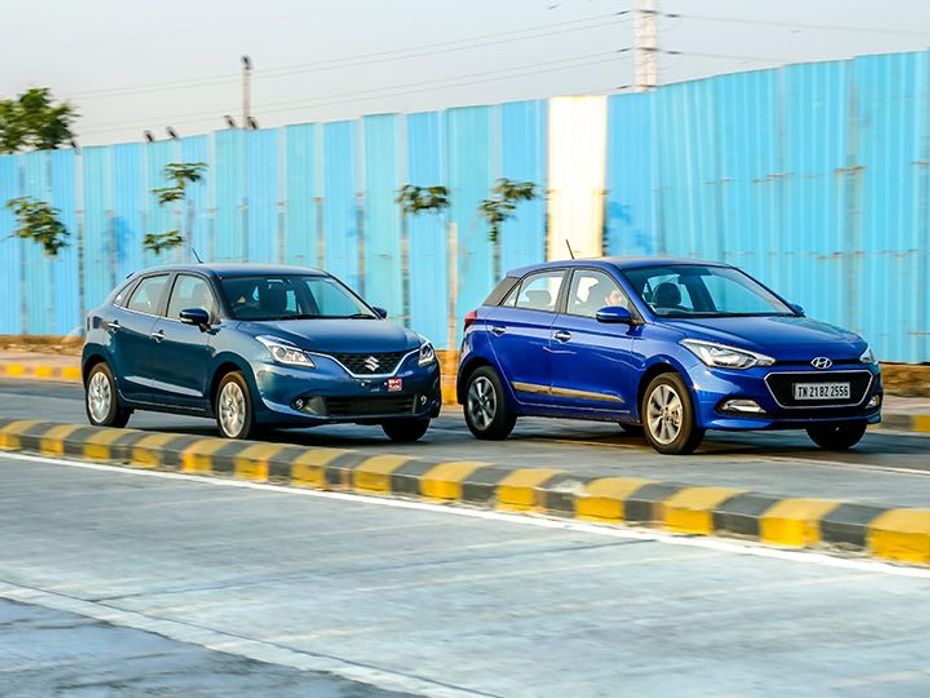
Engines and performance:
Hyundai Elite i20 : rating_4.0_rating
Maruti Suzuki Baleno: rating_4.5_rating
Both cars are powered by 1.2-litre naturally aspirated petrol engines, but there is a significant difference between their power delivery and performance despite near identical outputs. The Elite i20 makes 81bhp and 115Nm, while the Baleno (which uses the same sprightly 1.2-litre mill as the Swift) makes 83bhp and 115Nm. Both produce peak torque at 4000rpm, but the Baleno feels torquier from the word go, almost as if the engine is more powerful. The fantastic state of tune of the Suzuki engine aside, it’s the lighter kerb weight of the Baleno that makes it sprightlier, the car tipping the scales at 865kg, nearly 200kg less than the i20!
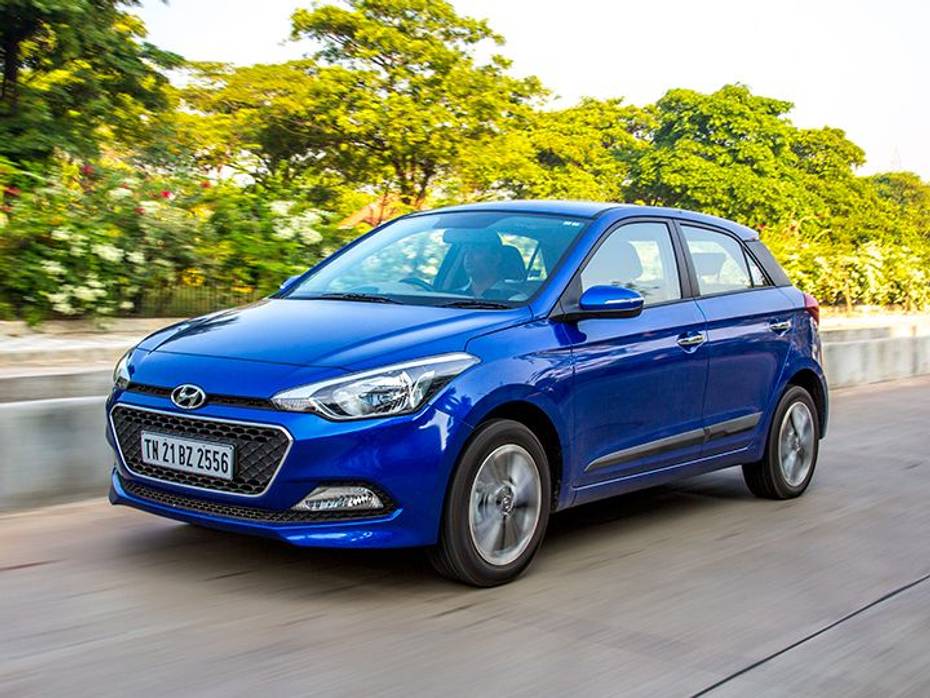
The Baleno feels more aggressive in terms of power delivery, and though we were not able to test the cars I am quite certain the Baleno is quicker to accelerate to 100kmph. The engine feels livelier as well, pulling cleanly to its redline. The i20 on the other hand feels more relaxed, and owing to its higher kerb weight feels a bit slower too. In terms of refinement the two cars are evenly matched as both engines feel smooth throughout, having been around for a while and having received several updates over the years.
For more details on the Maruti Suzuki Baleno log on to www.shivamautozone.com
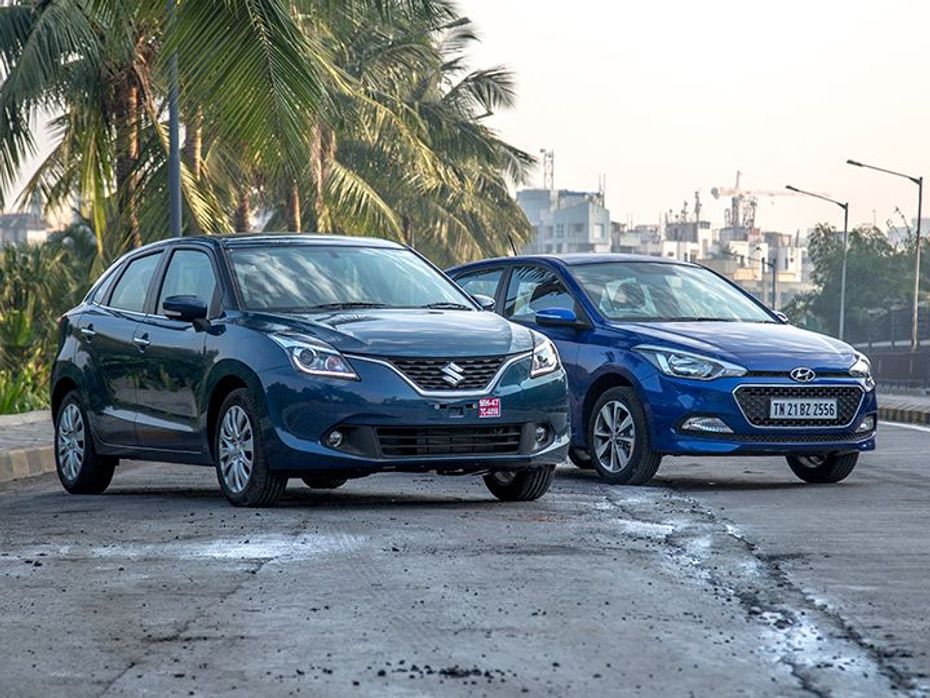
Ride and ease of driving:
Hyundai Elite i20: rating_4.5_rating
Maruti Suzuki Baleno: rating_4.0_rating
Both cars offer ample ease of driving in city – the Elite i20’s steering is lighter than the Baleno which helps at crawling speeds and while parking, but the Baleno’s well-weighted steering offers more precise control on the go. The Baleno also boasts a tighter turning radius which makes U-turns easier and quicker. Visibility in both cars is good, though the Baleno feels just a shade better, especially while parking thanks to larger glass areas at either end. Suspension setup on the Elite i20 is softer, owing to which it feels better in terms of rear seat comfort in city. The Baleno isn’t far behind though, despite its slightly stiffer setup, even on broken and uneven roads.
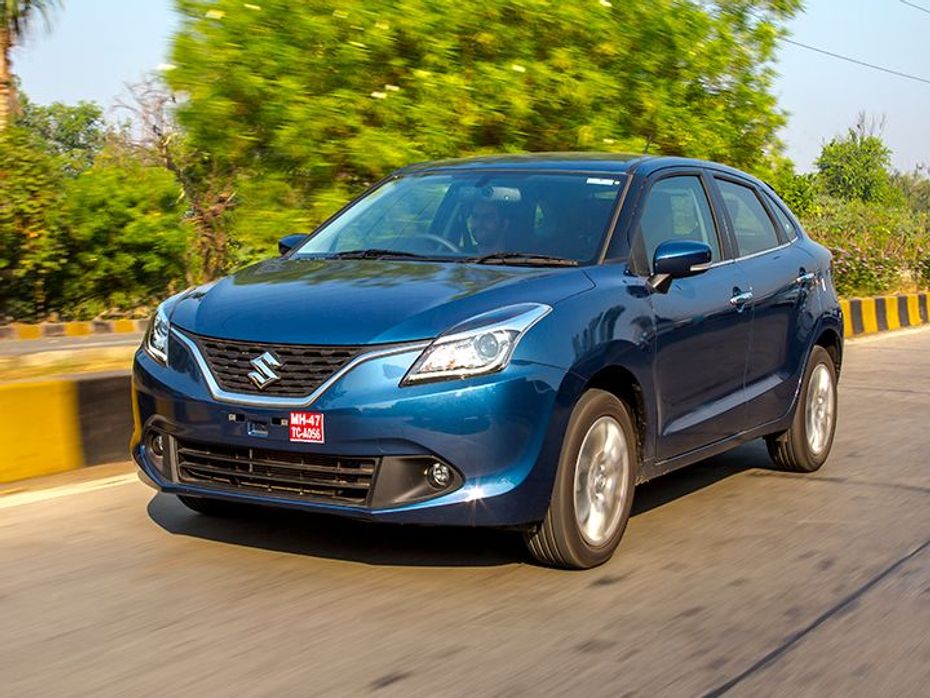
Handling and Braking:
Hyundai Elite i20: rating_4.0_rating
Maruti Suzuki Baleno: rating_4.5_rating
This is where the two cars are as different as chalk and cheese from each other. Expectedly, the Baleno holds a clear edge in terms of handling – credit that to the significantly lighter body weight as also sporty suspension setup. Thrown into a set of corners the Baleno is sharper and more confident, as it’s weighted steering offers a precise feel while the light weight and well-balanced chassis adds to experience. In terms of braking both fare equally well, though the Baleno should be a smidgen quicker to come to a full stop thanks to its lower weight.
The Baleno is the better driver’s car but the Elite i20 is clearly better at making its occupants feel more comfortable. Its setup overall is more focussed on offering better passenger comfort and a plusher ride, which is also one of the reasons behind its success, as premium hatch buyers rate comfort rather highly, these cars primarily being used as family cars. The i20’s light steering feels vague when driving enthusiastically, and thanks to its soft suspension the i20 is better off at being driven easily rather than pushed hard.
For more details on the Maruti Suzuki Baleno log on to www.shivamautozone.com

Price and fuel efficiency:
Hyundai Elite i20: rating_4.0_rating
Maruti Suzuki Baleno: rating_4.5_rating
The all-important factors. Both cars are closely matched on almost parameters, and it is not surprising that the top variants of the Baleno and Elite i20 are spaced by less than 20,000 rupees. The top of the line Alpha variant of the Baleno retails at Rs 7.01 lakh ex-showroom, New Delhi, while the Asta (O), the new top variant of the Elite i20 with the AVN package costs Rs 7.19 lakh. Quite a close competition this. In terms of efficiency, the cars space themselves out though with Maruti’s revvier, peppier mill also being more efficient, the Baleno boasting a claimed figure of 21.4kmpl as compared to the i20’s 18.6kmpl.
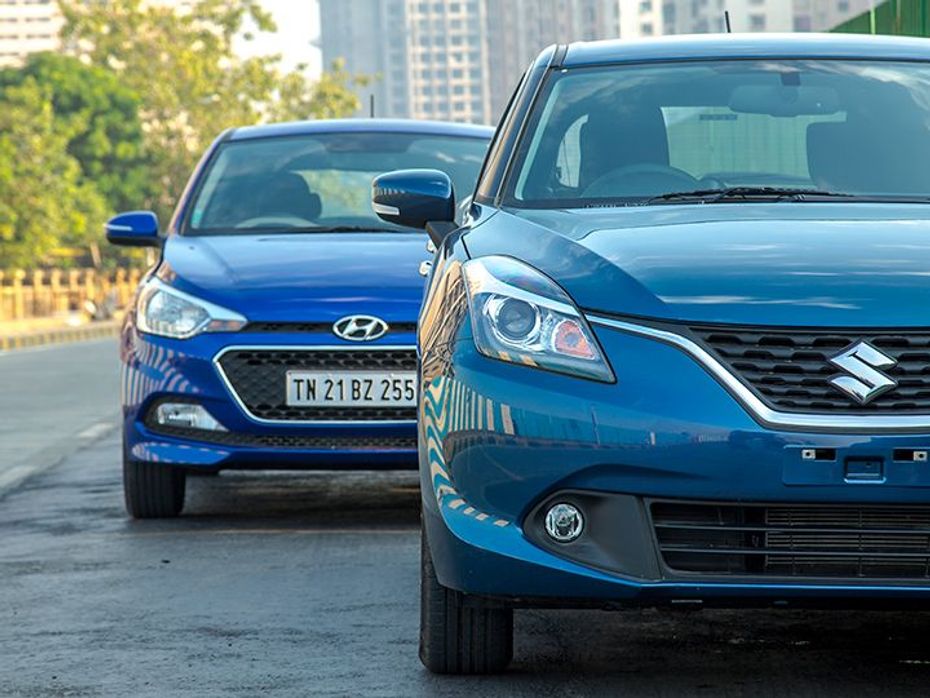
Verdict:
Hyundai Elite i20: rating_4.5_rating
Maruti Suzuki Baleno: rating_4.5_rating
This is easily one of the closest comparisons, both players fighting tooth and nail in every possible way. While the Baleno is sportier and more fun to drive, the Elite i20 makes no bones about being the better car in terms of comfort and ease of driving in city, the typical domain for the two. It still is the better looking car in our opinion, as the Baleno’s rounded design isn’t quite suited to everyone’s taste. Also, both cars are more or less evenly matched in terms of build quality and refinement.
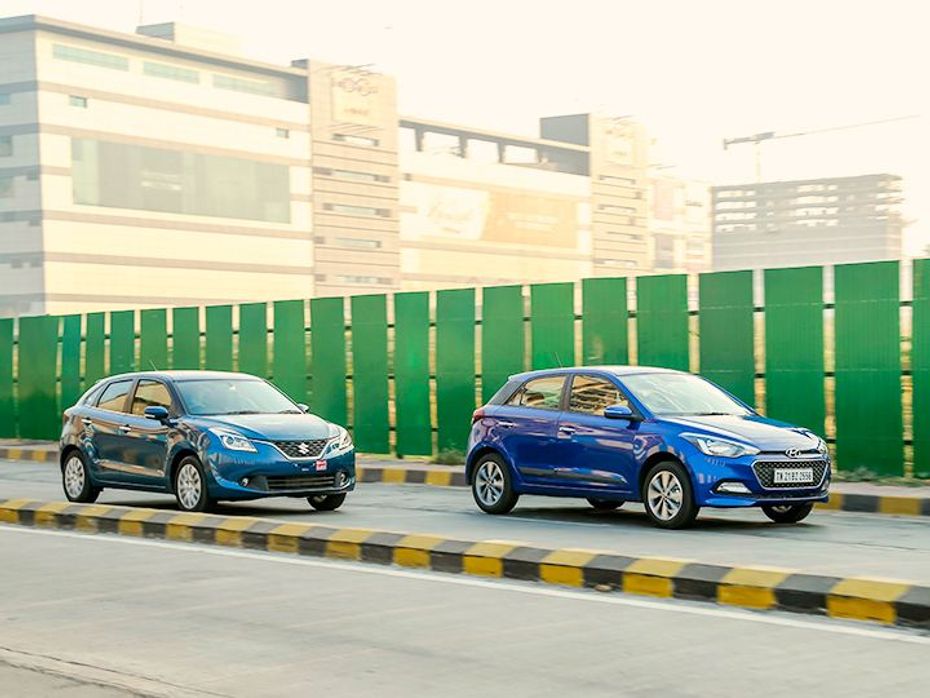
It’s hard to take a pick thus, especially since both Maruti and Hyundai are equally good in terms of dealer and service network. Add to that hassle-free ownerships for either brand. The Elite i20 has been the undisputed king of the premium hatchback hill, but looks like the Hyundai has found its match in the Baleno, especially since it comes from a brand that is a household name in small cars. That said, the Baleno does up the game further with its features, equipment, and not to mention driving pleasure. If the full-loaded variant is what you are looking for, the Baleno makes more sense with its goodies apart from being a better driver’s car. However the Baleno’s lower variants lose out on features and equipment to the i20, since Hyundai is offering more features even on the lower variants, apart from it being a more comfortable car.
For more details on the Maruti Suzuki Baleno log on to www.shivamautozone.com

Maruti Suzuki Baleno DualJet Vs Rivals: Spec Comparo

Toyota Glanza vs Rivals: Spec Comparison

Toyota Glanza 2019 Quick Walkaround: Difference vs Baleno, Price,...

How Does The Tata Altroz Size Up Against The Baleno and Elite i20?

Tata Altroz ICE Vs Altroz EV: Worth Waiting For The Electric?

2020 Hyundai i20 vs Elite i20: What’s New?

Maruti Suzuki Dzire Old vs New: More Than A BS6 Update

Tata Punch Dimensions And Engine Specs Compared With Maruti Suzuki...

2020 Maruti Suzuki Vitara Brezza Petrol vs Rivals: Engine...

Tata Nexon vs Maruti Suzuki Vitara Brezza: Comparison Review
 Tata Punch
Tata Punch
India's largest automotive community
 Maruti Dzire
Rs. 6.79 Lakh
Maruti Dzire
Rs. 6.79 Lakh
 Maruti Swift
Rs. 6.49 Lakh
Maruti Swift
Rs. 6.49 Lakh
 Maruti Ertiga
Rs. 8.69 Lakh
Maruti Ertiga
Rs. 8.69 Lakh
 Maruti Brezza
Rs. 8.34 Lakh
Maruti Brezza
Rs. 8.34 Lakh
 Maruti FRONX
Rs. 7.51 Lakh
Maruti FRONX
Rs. 7.51 Lakh
 Maruti Swift
Rs. 6.49 Lakh
Maruti Swift
Rs. 6.49 Lakh
 Maruti Baleno
Rs. 6.66 Lakh
Maruti Baleno
Rs. 6.66 Lakh
 Maruti Wagon R
Rs. 5.54 Lakh
Maruti Wagon R
Rs. 5.54 Lakh
 Tata Tiago
Rs. 4.99 Lakh
Tata Tiago
Rs. 4.99 Lakh
 Maruti Alto K10
Rs. 3.99 Lakh
Maruti Alto K10
Rs. 3.99 Lakh